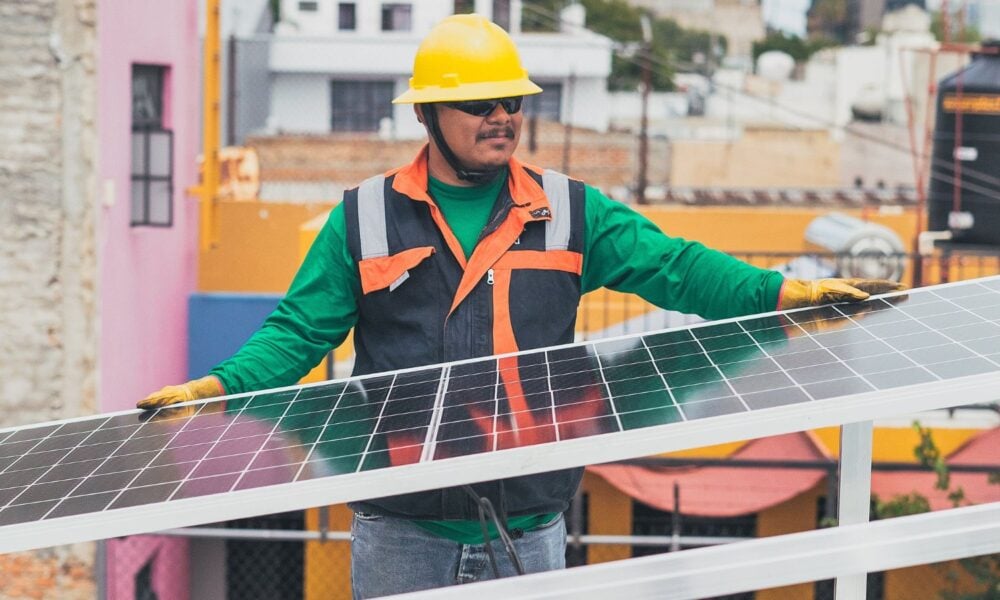During my more than two decades of federal service, I learned many things about the function of government. The Environmental Protection Administration (EPA), where I spent the most time, is charged with protecting public health and the environment, and it uses two primary levers
- setting rules and regulations to level the playing field for markets to work in the service of ALL residents of the United States
- providing resources to promote the public good.
For example, EPA rules limiting ozone pollution or carbon from power plants move the first lever, while the combined $1.25 billion funding from the Inflation Reduction Act (IRA) and Bipartisan Infrastructure Law are clear examples of the latter. I gained experience in both arenas and know that both are incredibly important to achieve our rapidly approaching climate goals during this defining decade.
There are a number of ways the communities most in need can access financial resources from the EPA. I often think of these opportunities like duct tape—a versatile and resourceful tool, reliably bringing together various elements to create a cohesive whole. Funding can act as a transformative force, not just holding things together but enabling innovation and repair, much like duct tape’s ability to fix and enhance.
I’ve previously mentioned various EPA programs targeted towards community-based organizations and environmental justice (EJ) communities. EPA has published numerous grants for communities to access IRA funding, and now that includes $2 billion to be given out as Community Change Grants to implement transformational opportunities.
In addition to grants, there also are financing opportunities and tax breaks for the purchase of an electric vehicle or for building businesses and jobs. The reason for the different approaches is that each serves a different constituency and (hopefully!) builds towards the broadest base for climate action that the U.S. has ever seen.
Importantly, these grants and financing can help communities shape their energy future.
UCS collaborated with Soulardarity in Highland Park, Michigan, and GreenRoots in East Boston, Massachusetts, in recent years on analyses that helped demonstrate the clean, resilient, and affordable energy future those communities want. Accessing funding, like the grants now available through the IRA, could help bring these visions into reality if the funding is implemented in a way that allows communities to lead.
For example, in California, vulnerable communities are advocating for funding to repurpose cropland inside and around their homes, schools, and businesses; to build community solar and to increase access to safe drinking water. UCS has been working closely with a number of community-based organizations located in the Central Valley and wants to continue working with more community-driven, science-based project proposals.
EPA programs can be a critical funding source for community projects
Let’s look at the general contours of three programs that EPA administers, based on how they are run, and consider their implications for community projects like those I mentioned above.
Solar for All
This $7 billion program is designed to allow applicants (mostly states, tribes, and large national nonprofits) to administer low-income solar programs or design and deploy new Solar for All programs in their respective states or territories. The goal is to encourage distributed solar programs to reduce energy burden and ramp up a clean energy source critical to achieving climate goals and building community resilience. The grant application period closed on October 12, 2023, and UCS is working with partners to consider how we can make sure the funding reaches the intended target communities. We also closely are monitoring how states like Massachusetts, Illinois, and Michigan will set up and deploy their programs, should they be selected among the up to 60 grantees EPA expects to award.
EPA’s Climate Pollution Reduction Grants (CPRG)
On September 20, 2023, EPA announced the Climate Pollution Reduction Grants (CPRG). Administered by the Office of Air and Radiation, this program is $4.6 billion in competitive project implementation grants to states and tribes. These implementation grants are detailed and focused on GHG emissions reductions.
Earlier this year on March 1, 2023, EPA announced $250 million in climate planning grants through a combination of funding to states and the most populous cities, and separate guidance for tribes and territories, to help communities get ready for implementation projects. These programs center agencies–whether state, local, territory, or tribal–as the target.
The CPRG general competition is also designed to incentivize eligible applicants to apply for funding together as a coalition to implement greenhouse gas reduction measures regionally, across multiple municipalities, state boundaries, or even state and tribal boundaries. Details on eligible applicants and coalitions for this section are available here.
It’s up to local and state agencies to engage with the public and get input from community organizations. They are encouraged to do this by the federal government via the Justice40 mandate, but largely are allowed to decide how they will do their community outreach.
UCS will be watching closely these public engagement processes in our target states and advocating for truly meaningful and robust opportunities because there are plentiful examples in history of when federal and state funds have been used discriminatorily absent strong community voice.
EPA’s Environmental and Climate Justice Community Change Grants
The latest grant program announced on November 21, 2023, is EPA’s largest grant program dedicated to community-based organizations.
Originally noted in the IRA as the Climate and Environmental Justice Block Grants, $2.8 billion was for grants and $200 million was for technical assistance. The grants portion was sliced and diced to allow for $2 billion to be given out as Community Change Grants to implement transformational opportunities. Most of the funding will go out in $10-$20 million chunks and create 150 or so hotbeds of EJ activity. In a separate track, we will see places gaining expertise to engage better with policy makers and regulatory processes.
What makes these grants unique is that EPA has noted the IRA’s specific language for eligible entities that requires a community-based nonprofit organization (CBO) be the applicant. A CBO can apply for a grant alone or in partnership with an Indian tribe, a local government, or an institution of higher education, or other CBOs.
Let’s slow down here on this point. Requiring CBOs to be at least one of the applicants for these EPA grants helps change the power dynamics of how priorities are set and who gets to set them. This is key for procedural justice. And, true collaboration, where the needs and desires of the community organizations that often get subjugated, stand a better chance of driving the project choices once the grants are in the hands of the funded group.
EPA has learned from California’s Transformative Climate Communities program about essential elements to ensure equitable outcomes, including anti-displacement and workforce development, while driving down climate-warming emissions through community-driven solutions. They also embraced their own history of grantmaking, including the EJ Collaborative Problem-Solving and the popular, but defunct, Community Action for a Renewed Environment cooperative agreements in asking for applicants to show that they are linking their projects to community-supported visions.
EPA has said their goal through IRA is to innovate the process of grantmaking through government, as well as the outcomes. However, all the money needs to be spent by September 30, 2026, several years sooner than for Solar for All and CPRG, per Congressional direction. This means that the parties are all working under tremendous time constraints.
Some novel approaches for all of federal government come from intense consultation with communities. EPA has decided to allow communities to pitch their ideas orally, at the final stage, and they have a rolling application period wherein applicants can receive feedback and possibly resubmit a proposal through November 21, 2024. Usually, applicants only have one opportunity to apply per appropriation cycle, which can be a drag for forming partnerships.
The Equitable and Just National Climate Forum–of which UCS is a founding member–has provided joint comments to EPA on their grant programs and made a point of encouraging EPA to use various flexibilities to make grants easier for EJ organizations to receive and administer funding, multiple ways to prioritize communities overburdened by pollution and climate change impacts and threats, and more. They played an essential role in conceptualizing and advocating for the creation of these grants. Throughout this year, EPA has heard from numerous stakeholders at many forums and made these interesting changes to the design.
Depending on your perspective, the $2 billion is either a historic investment in EJ or a pittance compared to the funding for other programs. For those who believe it’s insufficient, EPA often uses programs like this as seed capital to leverage other investment, whether by other public agencies at other levels or by private sector, in marginalized communities.
Will EPA funding be a catalyst for more community investment?
The onus is on EPA and other agencies to change the reputation of government as a red-tape monolith through each of these programs. But will they come through with the technical assistance in time for communities to apply? Will the effort of organizations to apply actually bear fruit with the emphasis being on the most vulnerable? Will those funds galvanize a base so that other programs work better at the local and community level given the very short time window to implement (in some cases only two years)?
It is complicated with the many slices of funding, myriad types of eligible organizations, so many lead agencies, and accelerated timing for submitting grant applications. And, with budget hawks and climate deniers in Congress perched nearby, all the “i’s” need to be dotted and “t’s” need to be crossed. For good reason, capacity-constrained community organizations are wondering which of these new funding opportunities better align with their needs and if it is worth their time and effort.
I tend to see that every individual win for community-based work adds to the chorus proving that environmental and energy justice can be achieved, building a healthier and more prosperous country.
I’m excited to continue working with UCS colleagues with our partners to navigate the federal funding system towards success.

